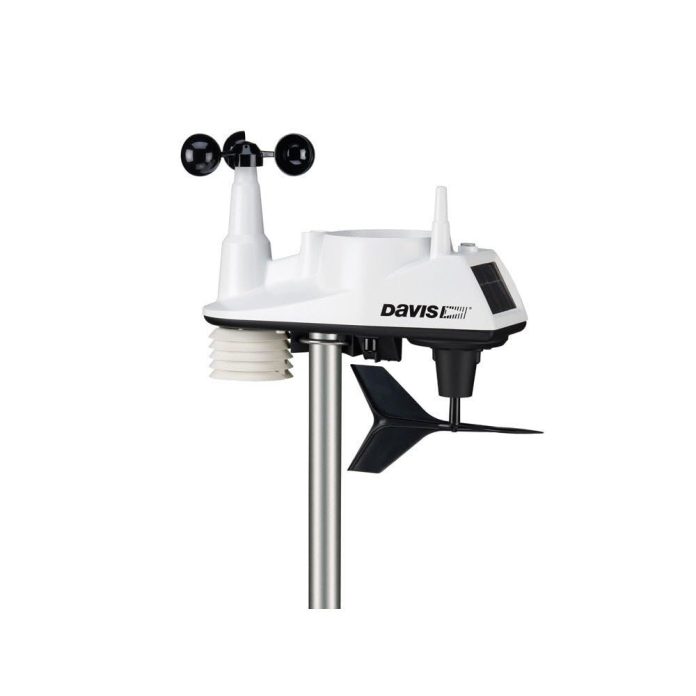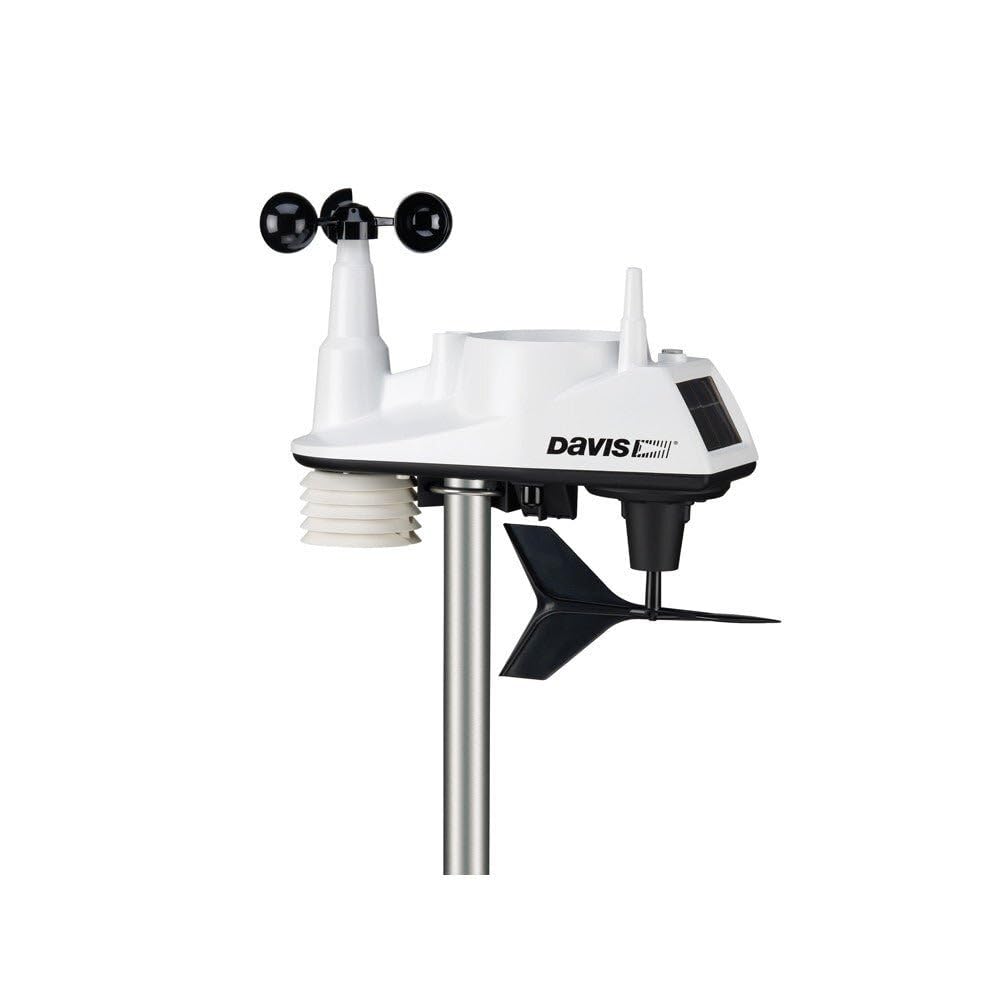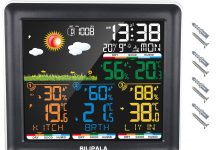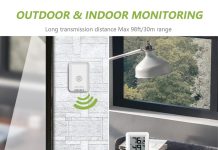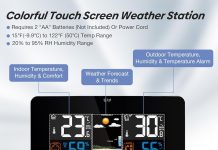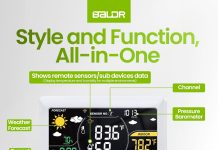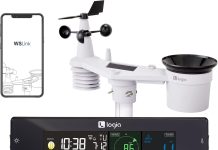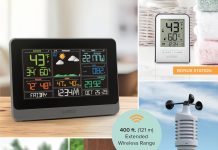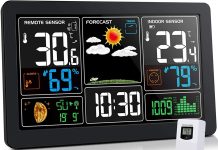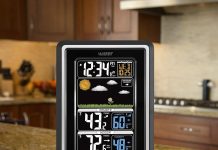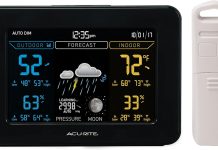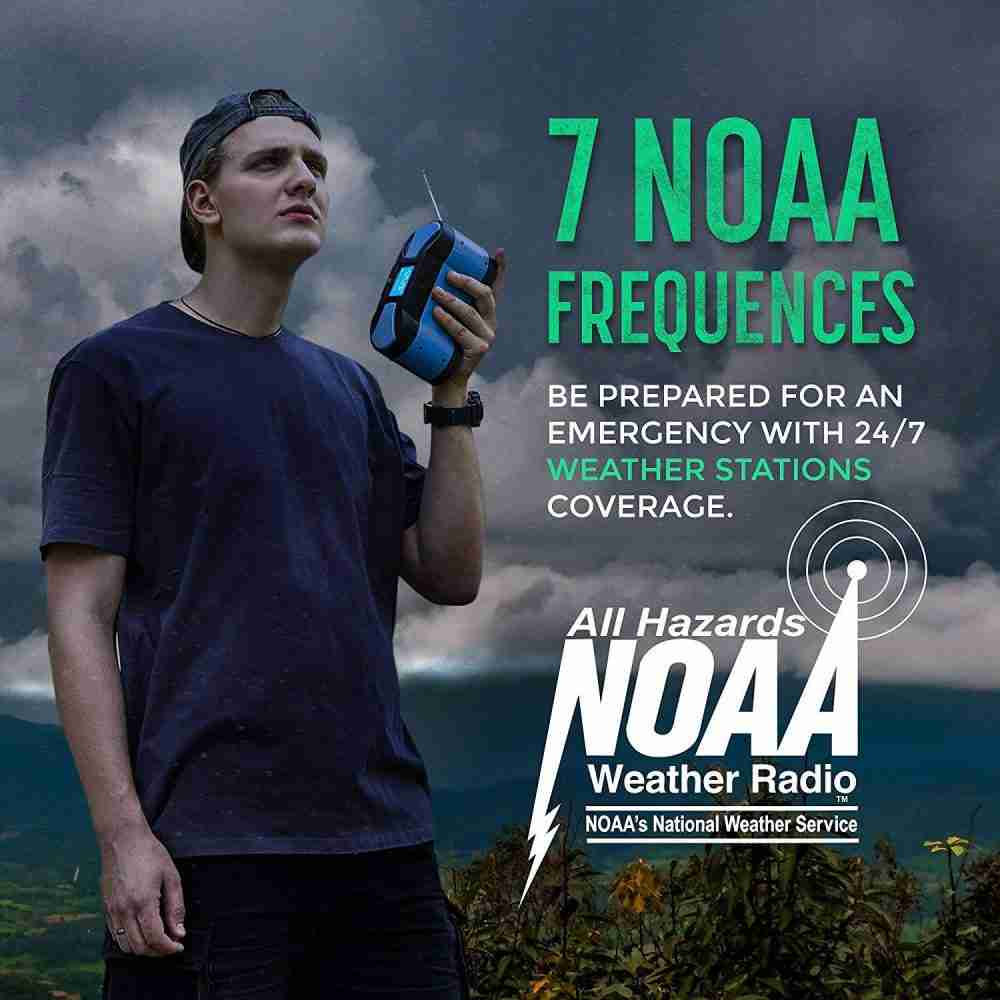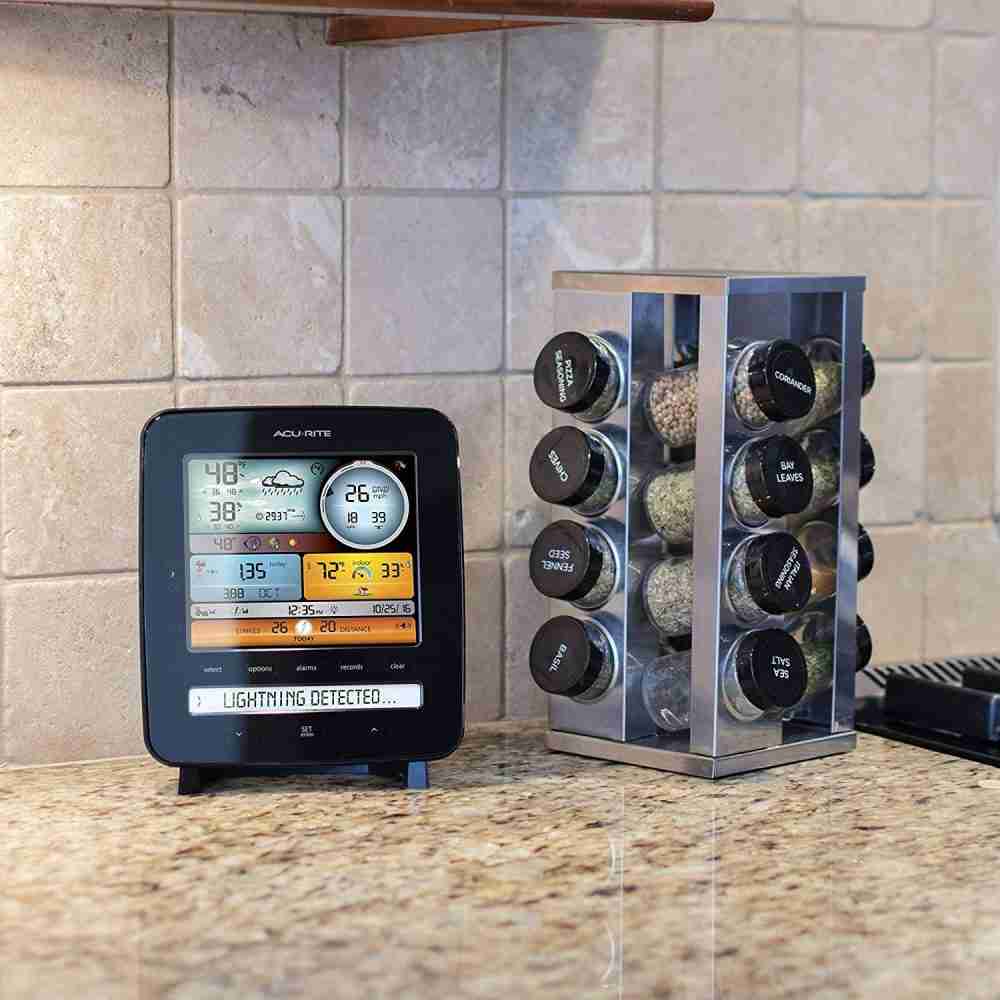?Are we getting the right combination of accuracy, durability, and simplicity with the Davis Instruments 6357 Vantage Vue Wireless Sensor Suite?
Product overview: Davis Instruments 6357 Vantage Vue Wireless Sensor Suite
We like to start by stating plainly what this unit is: it’s an integrated, corrosion-proof sensor suite that measures temperature, humidity, rainfall, wind speed, and wind direction. The sensor array is wireless and engineered to send frequent updates to a compatible console up to 1000 ft (300 m) away, although the console is not included.
What’s included in the package
We receive the integrated sensor suite and the mounting hardware with the purchase, which is handy because the suite is mostly ready to install out of the box. The mounting pole is sold separately, so we need to plan for that extra purchase if we don’t already have suitable mounting tubing.
Key specifications at a glance
We find a quick reference table helpful when comparing products. Below we summarize the key specs that are explicitly provided by the manufacturer and that we rely on when planning installation and use.
| Specification | Detail |
|---|---|
| Product name | Davis Instruments 6357 Vantage Vue Wireless Sensor Suite |
| Sensors | Temperature, Humidity, Rainfall, Wind Speed, Wind Direction |
| Rain resolution | 0.01 in (0.2 mm) |
| Wind | Anemometer wind-tunnel-tested up to 180 mph (290 km/h) |
| Wireless range | Up to 1000 ft (300 m) to console (line of sight) |
| Update rate | Every 2.5 seconds |
| Power | Solar panel with onboard super capacitor; backup lithium battery |
| Housing | Corrosion-proof; electronics potted or over-molded for moisture protection |
| Mounting | Hardware included; mounting pole sold separately |
| Console | Not included |
Design and build quality
We appreciate that the Vantage Vue is compact and purpose-built to handle outdoor exposure while remaining lightweight and easy to mount. The form factor keeps all important sensors grouped in a small footprint, which simplifies placement but requires careful consideration of surrounding obstructions.
Materials and weatherproofing
We like that Davis used corrosion-proof materials and that the electronics are either potted or over-molded, which adds a reliable layer of moisture shielding. This construction is purposeful: the sensors are meant to survive rain, sun, and wind without frequent ingress-related failures.
Mounting and physical installation
We find the included mounting hardware helpful because it gets us started right away, but we must still buy or source a vertical mounting pole. Because this is a single-piece sensor suite, we recommend mounting it at a location with minimal obstructions and at the correct height for the measurements we want, such as standard meteorological heights for wind and temperature readings.
Sensors and measurement performance
We are most interested in how the suite performs in real conditions — accuracy, responsiveness, and repeatability matter most for us. The Vantage Vue’s sensors are designed for fast updates and decent precision, which is appealing for homeowners, hobby meteorologists, and many small operations.
Temperature and humidity
We find the radiation shield helpful for reducing solar heating bias on temperature readings, and the shield combined with the high-quality humidity sensor typically yields stable indoor-comparable readings outdoors. To get the most accurate results, we position the unit in a location that follows standard guidelines: shaded, ventilated, and elevated away from heat sources.
Rainfall measurement
We appreciate the 0.01” (0.2 mm) resolution for rainfall measurement, which is fine-grained for most residential and agricultural needs. The tipping bucket design that Davis uses is durable and gives us reliable instantaneous and accumulated precipitation readings, assuming the collector is kept clean and free of debris.
Wind speed and direction
We value the fact that the anemometer has been wind-tunnel-tested up to 180 mph (290 km/h), which tells us the mechanical assembly is built to cope with storm-level conditions. For accurate wind direction and gust reports, we recommend mounting the sensor suite away from obstructions and at an appropriate height; gusts are inherently variable, but the 2.5-second update rate helps capture them quickly.
Power system: solar, super capacitor, and backup battery
We like products that minimize maintenance, and the Vantage Vue’s primary reliance on solar power with a super capacitor and a back-up lithium battery is designed to do just that. This hybrid system reduces the need for frequent battery swaps while maintaining functionality at night and during extended cloudy periods.
Solar charging and super capacitor behavior
We notice that the solar panel keeps the station energized during daylight and the super capacitor stores enough charge to keep the electronics running at night. For us, this arrangement is attractive because capacitors generally tolerate temperature extremes better than conventional rechargeable batteries, reducing seasonal maintenance tasks.
Backup lithium battery and cold-weather concerns
We appreciate that Davis includes a backup lithium battery that only activates when necessary, which extends operational reliability during prolonged low-sun periods. In very cold climates, the backup battery can be crucial for ensuring continuous operation, but we still recommend monitoring the system during prolonged storms or deep cold snaps.
Wireless connectivity and update frequency
We are frequently asked how fast and how far the Vantage Vue talks to a console, and those are practical questions for planning. The transceiver is engineered to update every 2.5 seconds and to maintain communication up to about 1000 ft (300 m) in ideal line-of-sight conditions.
Update interval and responsiveness
We like the fast update interval because it allows us to see near-real-time changes, especially for wind gusts and sudden rainfall. The 2.5-second update rate makes the station feel responsive for everyday use and more meaningful for short-term weather events.
Range, obstacles, and best practices
We find that the quoted 1000 ft (300 m) range is realistic only in line-of-sight conditions without major obstructions such as buildings, trees, or sloping terrain. To preserve consistent connectivity, we recommend mounting the sensor suite and console where signal paths are as unobstructed as possible and avoiding heavy structural interference.
Compatibility and setup considerations
We like simple setup processes, but since the console is not included, we need to plan for a compatible Davis console or data logger if we want local readout or data logging. This gives us flexibility, but it also requires an additional purchase and setup time.
Console options and data logging
We usually pair the sensor suite with a Davis console or WeatherLink data logger to capture, display, and archive weather data. The console choice determines the user interface and the depth of data logging and remote access available to us.
Third-party and network connectivity
We know many users want to push their data to online platforms or integrate into home automation; depending on the console or logger we pick, the Vantage Vue can work well with Davis’s ecosystem and, via appropriate interfaces, with other services. We recommend checking compatibility before buying the console or additional hardware for cloud upload.
Installation tips for better accuracy
We want accurate readings, and minor placement and installation choices make a major difference. Following a few practical rules helps us maximize the potential of the Vantage Vue.
Best placement for temperature and humidity
We position the sensor suite away from direct daytime heating sources like asphalt, HVAC exhausts, and direct reflected sunlight. The radiation shield helps, but placement in shaded, ventilated spots further improves temperature and humidity accuracy.
Best placement for wind and rain
We mount the unit on a pole that is clear of obstructions and elevated to an appropriate height: higher for wind measurement and unobstructed for rain collection. We avoid overhanging branches and nearby structures that block wind flow or throw debris into the rain collector.
Durability and performance in extreme weather
We want weather stations that keep working through harsh conditions, and Davis has designed the Vantage Vue with that expectation in mind. The protective housing and tested wind capability give us confidence that the unit can survive many challenging weather episodes.
Moisture protection and corrosion resistance
We are reassured by the over-molded or potted electronics and corrosion-proof materials — these features help prevent water penetration and metal corrosion in coastal or highly humid environments. Keeping the rain collector clear of debris and the solar panel clean helps extend long-term reliability.
Performance in storms and high winds
We like that the anemometer is wind-tunnel-tested to very high speeds; this demonstrates mechanical robustness that is important when severe weather arrives. For extreme conditions beyond what most residential setups experience, we still recommend verifying mounting hardware and pole stability to reduce the risk of damage.
Maintenance and troubleshooting
We prefer devices that require minimal upkeep, and this station fits that desire, but it does need occasional attention to keep readings accurate and to maintain wireless reliability. A few routine checks keep the station functioning for years.
Routine cleaning and seasonal checks
We routinely clear leaves, dust, pollen, and insect nests from the rain collector and radiation shield, which preserves reading accuracy. Cleaning the solar panel and checking that the mounting hardware is tight are simple tasks that prevent drift and maintain power.
Common issues and fixes
We commonly see problems caused by poor mounting or obstructed signal paths rather than sensor failures. If readings seem off, we first check for shading, nearby heat sources, blocked collectors, and debris. For wireless dropouts, we check line-of-sight and remove potential interference before assuming hardware failure.
Integration with weather networks and data access
We value the ability to share data for community science, personal logging, or integration with smart home systems, and the Vantage Vue can be part of those workflows with the right add-ons.
Local displays and logging
We like that adding a Davis console or WeatherLink logger gives us local, archived, and sometimes web-accessible data depending on the model we choose. The console choice determines whether we can easily export data or make it available to cloud services.
Feeding third-party services
We know many users want to publish observations to networks such as Weather Underground or personal websites; with the right Davis data logger and internet connection, the Vantage Vue can feed those services. We advise confirming the specific logger or bridge needed for external service compatibility before purchase.
Pros and cons — quick summary
We find that summarizing strengths and weaknesses helps us make quick decisions when comparing weather stations. Here are the main pros and cons we identified for the Vantage Vue.
Pros
- Reliable, integrated sensor suite that’s compact and easy to mount.
- Frequent updates every 2.5 seconds for responsive measurements.
- Solar-powered with super capacitor and backup battery reduces maintenance.
- Corrosion-resistant housing and moisture protection for durability.
- High wind survivability with anemometer tested up to 180 mph.
- Fine rain resolution at 0.01” (0.2 mm) suitable for many users.
Cons
- Console not included — additional purchase required for local readout or logging.
- Wireless range of up to 1000 ft (300 m) can be reduced significantly by obstacles.
- Integrated design means a single point of mounting; careful placement is required for all sensors.
- Replacement parts and accessories (mount pole, console, loggers) are extra cost.
How the Vantage Vue compares to similar products
We like to understand where a product sits in the market so we can recommend it for the right audiences. The Vantage Vue positions itself as a robust, mid-range, all-in-one station aimed at homeowners, education, and light professional use.
Compared with basic consumer stations
We find the Vantage Vue generally more durable and accurate than many budget consumer stations, especially in its build quality and sensor protection. The solar super capacitor system and corrosion-resistant materials are features not commonly found on lower-cost models.
Compared with higher-end professional systems
We note that professional-grade systems often provide separate, replaceable sensor heads, more precise instrumentation, and advanced logging options, which can be better for scientific research or critical agricultural monitoring. The Vantage Vue, however, offers a strong balance of accuracy, durability, and convenience at a lower cost and simpler setup.
Who should buy the Davis Instruments 6357 Vantage Vue
We think the Vantage Vue is a great match for several user groups because of its combination of ease of use and ruggedness.
Ideal for homeowners and hobby meteorologists
We recommend it to people who want dependable, near-real-time weather data for their homes, gardens, or weather hobbyist setups. The fast update cadence and compact design make it easy to monitor local weather without complicated wiring or frequent battery swaps.
Good for schools, small farms, and community stations
We believe small institutions that need a rugged, low-maintenance station for education, small-scale agricultural decisions, or neighborhood networks will find the Vantage Vue appealing. The reliability and low maintenance are helpful in situations without dedicated technical staff.
Buying advice and recommended accessories
We usually suggest thinking beyond the sensor suite itself and planning for the accessories that make it useful in practice. We list several items to consider when budgeting and installing the Vantage Vue.
Must-have additions
- Compatible Davis console or WeatherLink data logger for local display and data archiving.
- Mounting pole or mast of suitable height and strength for your conditions.
- Additional hardware for mounting in high-wind areas, such as guy wires or reinforced brackets.
Nice-to-have accessories
- Protective shelter or secondary mounts for extreme environments.
- A lightning arrestor for locations prone to thunderstorms, especially with exposed poles.
- A remote power monitoring or alert system if the site is unattended and critical uptime is required.
Troubleshooting checklist
We prefer to empower users to solve simple issues themselves, and many common problems have straightforward remedies. We outline a short checklist that solves the majority of issues we encounter.
- Verify battery or power status and ensure the solar panel is clean and oriented properly.
- Inspect the rain collector for blockages and clear any debris that might be affecting readings.
- Ensure the suite and console have a clear line-of-sight and remove nearby obstructions where possible.
- Re-seat or replace corroded mounting hardware and check for water in connectors.
- Refer to the Davis manual for forced resets or re-pairing the sensor suite to a console.
Real-world usage tips
We want readers to be successful with their stations, so we share practical, field-tested tips that improve longevity and data quality.
Seasonal care
We suggest a quick check before each season: clean the rain collector and radiation shield, confirm the solar panel is free of grime, and check the mounting hardware. In winter, briefly inspect for ice accumulation and clear heavy snow that can block the rain collector.
Data sanity checks
We recommend cross-checking readings with a nearby trusted source periodically to identify drift. If temperature, rainfall, or wind data appear inconsistent, auditing placement and cleanliness typically resolves most issues.
Frequently asked questions
We like to answer the questions people often ask before purchasing to help them make an informed choice.
Do we need to buy a console?
Yes, the console is not included. We recommend selecting a compatible Davis console or WeatherLink logger based on whether we want local display, data logging, or internet upload functionality.
Can the Vantage Vue handle coastal conditions?
The corrosion-resistant materials and moisture-protection design improve performance in humid or coastal environments, but we advise periodic inspections and maintenance because salt air can accelerate wear over time.
How often will we need to replace batteries?
Because the Vantage Vue relies primarily on the solar panel and super capacitor, battery replacement frequency is low. The backup lithium battery typically only activates as needed, but we still recommend periodic checks especially in low-sun or high-winter conditions.
Final verdict
We believe the Davis Instruments 6357 Vantage Vue Wireless Sensor Suite strikes an excellent balance between durability, measurement quality, and low maintenance for most homeowners, hobby meteorologists, schools, and small farms. Its integrated, rugged design, frequent update cadence, and low-maintenance power system make it a strong choice for those who want reliable local weather data without constant upkeep. We recommend pairing it with an appropriate console or data logger and using a proper mounting pole to get the best possible performance from the system.
Disclosure: As an Amazon Associate, I earn from qualifying purchases.

